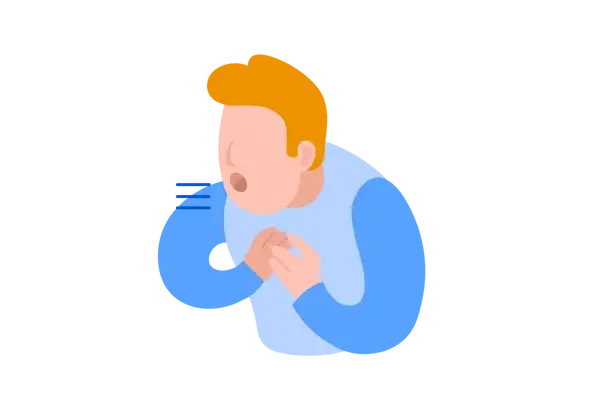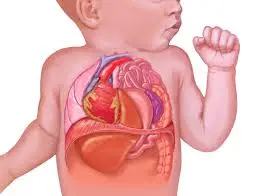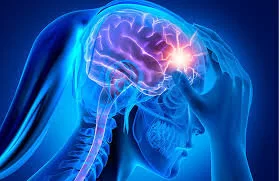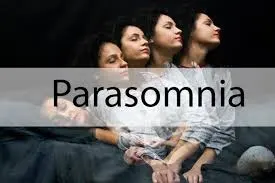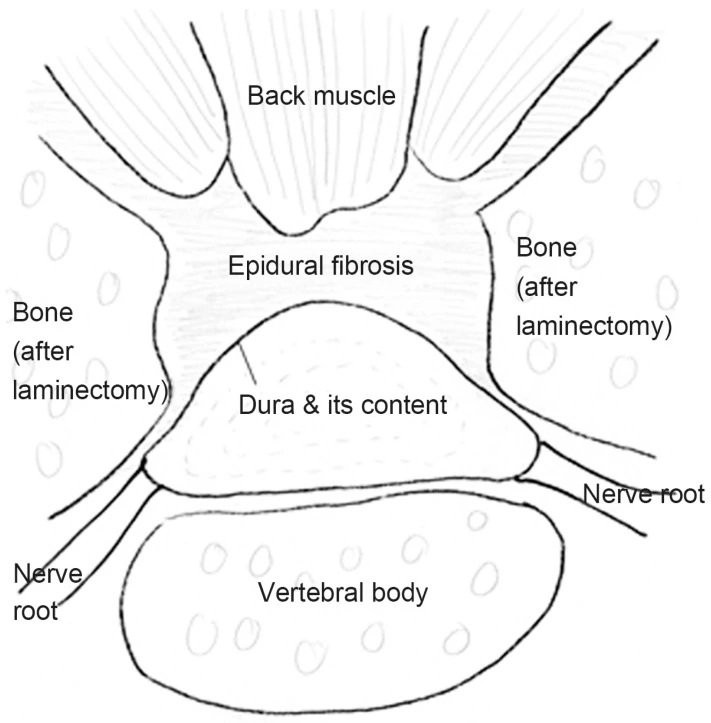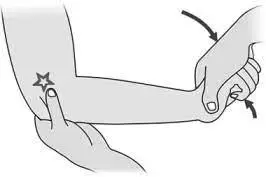Breast Pain and Breastfeeding: What to Know and How to Cope
Table of Contents
Introduction
Breast pain is a common concern for new mothers, particularly during the early stages of breastfeeding. This pain can arise due to a variety of reasons, ranging from simple issues such as improper latch or positioning to more complex problems such as infections or mastitis. Understanding the potential causes and implementing appropriate interventions can help alleviate discomfort and ensure a smooth breastfeeding experience for both the mother and the baby.
When initiating breastfeeding, mothers might experience soreness, tenderness, or even a mild burning sensation in their breasts. This discomfort is typically caused by the infant’s initial latching onto the breast. However, persistent or severe pain should not be ignored, as it could signal underlying issues that require prompt attention.
It is crucial for mothers to seek guidance from lactation consultants or healthcare providers if they experience intense or prolonged breast pain. Professionals can provide valuable assistance in identifying the root cause of the pain and can offer practical solutions to manage and overcome it. Additionally, employing proper breastfeeding techniques, maintaining good breast hygiene, and ensuring a balanced diet can contribute significantly to reducing breast pain and promoting a successful breastfeeding journey.
Types of Breast Pain
Breast discomfort can be classified as either cyclic or non-cyclic.
- Cyclic pain: Your menstrual cycle determines when you experience cyclic pain. For instance, experiencing breast soreness or pain simultaneously with your menstrual period. About two weeks before the onset of their menstrual cycle, many women report having breast pain and soreness. About seventy-five percent of breast pain is cyclic. Women between the ages of 20 and 50 are more likely to experience it, and usually, menopause causes it to end. Breast pain that cycles typically affects the outside, upper regions of both breasts as well as the area beneath the arms.
- Non-cyclic pain: It doesn’t usually follow a regular pattern and is unrelated to the menstrual cycle. The majority of individuals with non-cyclical breast discomfort are postmenopausal women in their 40s to 50s. Many people describe the pain as tightness in their chest, burning, or soreness in their breasts. It may occur periodically or continuously.
Causes of breast pain:
There are several conditions that might cause breast pain. Most of them are not significant, but some can be, therefore it’s crucial to consult your physician.
The milk ducts or milk glands may vary as a result of fluctuating hormone levels. Breast cysts are a common cause of cyclic breast discomfort and can be quite painful due to changes in the ducts and glands. There are a few possible causes of noncyclic breast discomfort, including trauma and previous breast surgery.
Breast pain can have several causes, some of which are preventable while others may raise the risk.
Causes consist of:
- Breast cysts: While not all breast cysts hurt, some might produce intermittent or continuous discomfort or soreness.
- Prescription drugs like:
- Hormone replacement therapy (HRT)
- Injection or pills for birth control
- Treatments for infertility
- Psychotropic drugs
- SSRIs:
- Diuretic
- Fibrocystic breast alterations: Breast enlargement, soreness, and lumps brought on by an accumulation of fluid in the breasts
- Breast surgery: Following breast surgery, scar tissue may cause discomfort.
- Costochondritis
- Damage or harm to the surrounding tissue or breast.
- A bra that provides inadequate or inappropriate support.
- Breast cancer: This was the last condition on our list because it is not usually the cause of breast pain; While some breast tumors and inflammatory breast cancer might cause discomfort, the majority of breast cancer types do not.
The following are the most typical causes of breast pain:
A plugged milk duct: Sometimes blockages occur in milk ducts. Where the duct is clogged, you can have pain in that area of your breast or develop a lump beneath the skin. To relieve pain and clear the duct:
Apply warm compresses to the area or take warm showers. Massage that area several times a day. Next, start breastfeeding your child right away.
When feeding, place your baby’s chin so that it faces the clogged area. This will facilitate a quicker emptying of that breast region.
While your infant is feeding, gently massage the lump. It can take the lump two or three feedings to go away. Additionally, you can gently massage the affected area for a few minutes while using a manual (hand) or electric pump to assist in drawing out the obstructed milk.
In between feedings, use cold compresses (ice wrapped in a small towel).
If the lump doesn’t go away in a few days, or if you experience pains, chills, fever, or res streaking, contact a doctor.
Mastitis: This is a breast inflammation. If you have red streaks, a firm, red region, or aching breasts, you may have mastitis. If a blocked duct is not cleared, it might result in mastitis or inflammation of the breast. It can cause flu-like symptoms and cause pain and inflammation in the breast. Mastitis can develop into an infection and require medications if you ignore the early symptoms. Contact your physician if you suspect you may develop mastitis. To empty your breasts of milk, keep breastfeeding or pumping in the interim. Before breastfeeding, alternate between warm compresses and light massage; apply cold compresses to the area after a session. Antibiotics may be required to treat mastitis brought on by an infection.
Mastitis symptoms include:
- A red area of skin that hurts to touch;
- A breast that feels hot and sore; a
- A general feeling of illness, such as the flu;
- Achy, weary, and teary;
- A high fever
Breast infection: Untreated mastitis infections can result in breast abscesses that may require surgery to drain. This may also occur if the mastitis does not improve after taking antibiotics and frequent feedings. Once an abscess has been drained, you can resume breastfeeding.
Thrush: You might have acquired a thrush if you feel discomfort in both breasts, usually following a time of pain-free breastfeeding, and the soreness persists for up to an hour following a feed.
Oral thrush: Babies may experience oral thrush, a yeast infection of the mouth. This causes white or yellowish spots on the lips, tongue, or inside the cheeks, as well as damaged skin in the corners of the mouth in babies.
If the infection spreads to your breast, it could result in:
- Breast soreness that either flares up or burning pain in the breast during or after feedings
- A deeply rooted breast ache
- Intense pain in the breasts or nipples that does not go away even after your baby latches on correctly or you move them.
- Breasts that are pink, red, glossy, flaky, cracked, itchy, stinging, or have a rash with tiny blisters
If your infant or you have any of these symptoms, contact your doctor.
Inverted or flat nipple: Breastfeeding difficulties and vaginal pain may arise for women with inverted or flat nipples, which are defined as protruding rather than pointing out, or from a failure to enlarge as much during lactation. If so, discuss strategies to ease any discomfort and facilitate nursing with your physician or a lactation consultant.
Breast engorgement:
Breast engorgement is the uncomfortable, puffy, and tender condition caused by an overabundance of milk in the breasts. Because of the increased blood flow to the breasts and the production of milk, it usually happens in the days and weeks following childbirth (chest). Although it aids in your body’s production of breast milk for your child, the increased blood supply may result in significant engorgement. Although they are a transient issue, engorged breasts might occur as long as you are a milk producer.
Breast engorgement is most frequently caused by:
- After giving birth, your milk is now “coming in.”
- While you’re breastfeeding, you neglect nursing sessions.
Your infant modifies their feeding routine. For instance, they begin to sleep through the night, - You forget to pump when you’re away from your kid or you skip pumping sessions.
- You either produce more milk than your infant requires or have an excess.
- You are weaning off your child’s breast milk and onto another type of milk.
- Achieving a balance between controlling your milk supply and avoiding engorgement can be challenging. Nonetheless, there are techniques to lessen the discomfort and risks associated with engorged breasts.
Why does breast engorgement occur?
Anytime your breasts are overflowing with milk, they enlarge. It can linger for several weeks and occurs for the first time within a few days of giving birth. Breast enlargement is possible as long as milk production is occurring.
Your breasts may get excessively full for the following reasons:
- Colostrum is changing into mature breast milk in your milk.
- You neglect or forego feedings or breastfeeding sessions.
- Your infant begins to eat solid food or sleeps through the night.
- You use a formula to augment meals.
- Because they are sick, your baby doesn’t eat as much.
- Your infant isn’t emptying the breast and latching on properly.
- Typically, your infant is aware of when, how long, and which breast to feed from.
Early indicators, or cues, that your infant is getting ready for food include:
- Sweeping their eyes quickly
- Placing a finger into the mouth.
- Digging, or rotating to one side and opening the mouth as though reaching for the breast
- Growing agitated
- Crying is the final indication that your child requires for feeding. A lot calmer feeding is usually the result of feeding them before they cry.
It will assist in keeping your baby close by so you can observe and pick up on their early feeding cues.
What are the signs of engorgement of the Breasts?
The symptoms won’t be the same in two persons. Individuals who have engorged breasts describe them as:
- Bigger and fuller than typical (by many cup sizes).
- Engorged.
- Painful
- Stiff and hard.
- A tender and sensitive to touch
- Hard lumps
Additionally, the swelling may spread to your sternum, or breast bone, and up into your armpit. This is because these regions are covered in breast tissue. It’s possible for your nipples to become flat and stiff instead of soft and supple.
When they are engorged, some people also get a mild fever known as milk fever. In most cases, this is OK. If your temperature gets worse or persists for many days, you should contact your doctor because it may indicate an infection.
Risk Factors for Breast Pain
Although it can happen after menopause, breast pain is more common in individuals who have not yet reached menopause. In addition to transgender individuals, men with gynecomastia may also experience breast pain.
Other elements that could raise the chance of experiencing breast pain include:
- Size of breasts. Due to the size of their breasts, people with enormous breasts may have noncyclic breast pain. Large breasts can cause back, neck, and shoulder pain in addition to breast pain.
- Breast surgery: After wounds have healed, breast pain related to breast surgery and scarring may occasionally persist.
- Fatty acid imbalance: The sensitivity of breast tissue to hormones in the bloodstream may be impacted by an imbalance of fatty acids within the cells.
- Use of medication: Breast pain may be related to certain hormonal drugs, such as oral birth control pills and some treatments for infertility. After menopause, estrogen and progesterone hormone treatments may cause breast discomfort as a side effect. Certain antidepressants, such as selective serotonin reuptake inhibitors (SSRIs), have been linked to breast pain. Certain antibiotics and medications used to treat high blood pressure are additional medications that may induce breast soreness.
- Excessive intake of coffee: Some people report that when they cut back or stop drinking coffee, their breast pain improves, though additional research is required.
Prevention for Breast Pain:
The causes of breast pain may be avoided with the use of the following measures, albeit their efficacy requires further study.
- Avoid hormone therapy if you can.
- Avoid drugs that are known to aggravate or induce breast pain.
- When exercising, wear a sports bra in addition to a bra that fits properly.
- Reducing or completely giving up caffeine is a dietary modification that some people find beneficial, despite conflicting research on the substance’s impact on premenstrual symptoms including breast pain.
- Avoid excessive or heavy lifting.
- Consume little fat and lots of complex carbohydrates.
- Ask your doctor how much to take if you plan to use an over-the-counter pain medicine like ibuprofen (Advil, Motrin IB, etc.) or acetaminophen (Tylenol, etc.), as prolonged usage may raise your risk of liver issues and other negative effects.
Diagnosis:
Tests to assess your health could consist of:
- Medical breast examination: Your doctor examines the lymph nodes in your armpit and lower neck as well as your breasts to look for any changes in your breast health. To rule out other possible causes of your pain, your doctor will probably listen to your heart and lungs and examine your chest and belly. You might not require extra testing if your medical history, breast exam, and physical examination find nothing odd.
- Mammogram: You will require a diagnostic mammography (X-ray inspection of your breast) if your doctor feels a lump or unusual thickening in your breast tissue, or notices a specific region of pain in your breast tissue. The X-ray may evaluate the region of concern during the breast exam(diagnostic mammogram)
- Ultrasonic: An ultrasound examination using sound waves to create images of your breasts, which is frequently performed in conjunction with mammography. Even if the mammography seems normal, you may require an ultrasound to assess a specific location of pain.
- Breast biopsy: Before your doctor can make a diagnosis, suspicious breast lumps, thickness, or atypical areas observed during imaging scans might need to be biopsyed. Your doctor takes a tiny sample of breast tissue from the affected area during a biopsy and then sends it for laboratory investigation.
Treatment:
For many, breast soreness eventually goes away on its own. It’s possible you don’t require medical attention.
Your doctor may advise you to do the following if you require treatment or assistance in controlling the pain:
- Remove any aggravating or underlying cause: A small change, such as wearing a bra with additional support, can be necessary for this.
- Administer a topical NSAID (nonsteroidal anti-inflammatory drug): If your pain is severe, you might need to use NSAIDs. Your physician can advise you to directly apply an NSAID cream to the painful area.
- Modify birth control tablets: Breast discomfort symptoms may be alleviated if you take birth control pills. You could try switching birth control methods or skipping the pill-free week. But without a doctor’s approval, don’t do this
- Lower the menopausal hormone therapy dosage: You may want to think about reducing or quitting menopausal hormone therapy completely.
- Utilize a prescription medicine. The only prescription drug that the Food and Drug Administration has approved for the treatment of fibrocystic breasts is danazol. Danazol, however, has the potential to cause serious adverse effects, including weight gain, changes in voice, and issues with the heart and liver. Prescription drug tamoxifen is used for the treatment and prevention of breast cancer. While it may help, there is a chance that the side effects of this medication will cause even more inconvenience than the breast pain.
Home Remedy:
Most people can get rid of breast engorgement in a few days at home. Several popular therapies for engorged breasts include:
- Before feedings, try applying a warm compress or having a hot shower to soften your breasts and promote milk flow.
- When nursing, giving your breasts a massage
- In order to release pressure, hand-express or pump a tiny bit of milk in between feedings.
- To help reduce swelling, place an ice pack or cold compress on your breasts in between feedings.
- Taking acetaminophen or ibuprofen to relieve discomfort.
- Feeding your infant every two to three hours, or expressing milk.
- Allowing your breasts to be totally drained by your kid.
Indeed, you can reduce engorgement by pumping a small amount of milk. Try pumping one to two ounces, or just enough to feel relieved. Recall that the process of making milk is one of supply and demand. Your body will simply generate extra to make up for it if you pump too much milk.
Conclusion:
Breastfeeding pain typically has a cause and a remedy.
When you find the solution, you can relish nursing and concentrate on the amazing ways you’re fostering your child’s development.
It is crucial that you get assistance from a lactation consultant, your midwife, or your doctor if you are experiencing any discomfort, gritting your teeth during each latch, or hating meals in general. They can assist you in determining the most appropriate feeding method for you.
FAQs
Cyclic breast pain typically affects the outside, upper regions of both breasts as well as the area beneath the arms. Non-cyclic pain does not follow a regular pattern and is unrelated to the menstrual cycle.
If a blocked duct is not cleared, it might result in mastitis or inflammation of the breast. It causes discomfort and inflammation in the breast and might give you symptoms similar to the flu. Mastitis can develop into an infection and require medications if you ignore the early symptoms.
Remove any aggravating or underlying cause. A small change, such as wearing a bra with additional support, can be necessary for this.
1. Apply a topical NSAID (nonsteroidal anti-inflammatory drug).
2. Modify birth control tablets.
3. Lower the menopausal hormone therapy dosage.
4. Utilize a prescription drug.
When you initially start breastfeeding, some pain in the nipples is normal. For around 30 to 60 seconds after your baby latches on to the breast, your nipples may feel a little sore. The initial weeks following delivery should see an improvement and increased level of comfort.
Breast pain seldom signifies breast cancer; more often, it is a marker of a benign (non-cancerous) breast disease. It’s necessary to get help for breast pain that doesn’t go away after one or two menstrual cycles, stays after menopause, or doesn’t seem to be related to hormone fluctuations.


